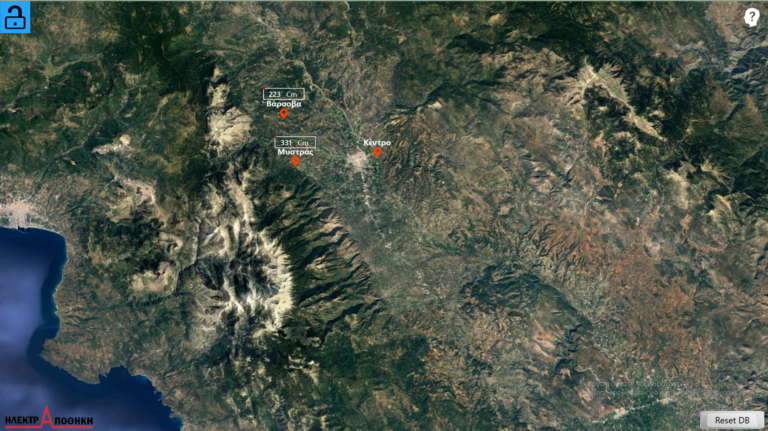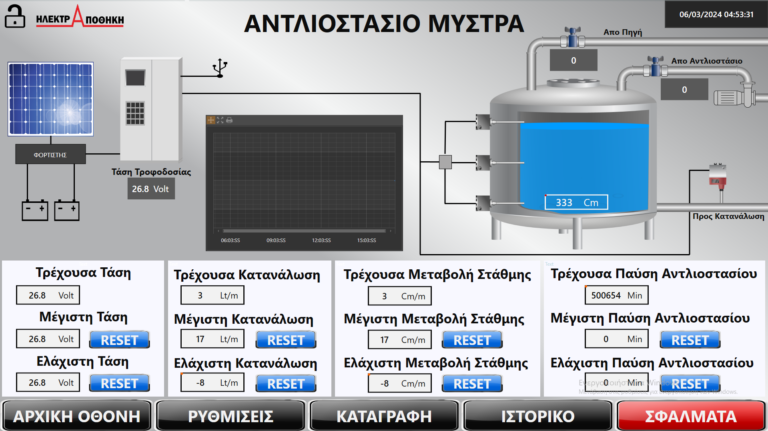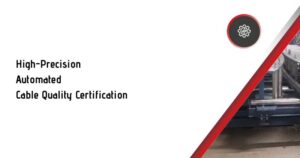Optimizing Remote Water Treatment Monitoring and Control

The Municipal Water Supply and Sewerage Company of Sparta in Southern Greece, manages the water biological treatment process, using natural filters and microorganisms in the tanks to remove harmful organic substances. The treated water is used for irrigation and water supply in the area. However, these water tanks are located in remote and difficult-to-access areas, far from the control unit, without access to electricity or internet, in villages 5-7 kilometers away.
Solar panels and batteries were required to monitor the condition of the tanks as well as a communication method between the pumping stations and the control center.
The need
The client wanted to monitor live data such as water level, flow rate, supply voltage, and consumption, to detect periods of high consumption, monitor leaks or tampering, and optimize the system’s operation for a longer equipment lifespan. This data would also help record system faults and provide immediate notifications to the staff via SMS and email.
Solution
Through a referral from our electrician partner, the client reached out to us for assistance with their equipment, and after studying the existing equipment, we presented our proposal, which consisted of two parts:
Network : We proposed wireless communication via a mobile network between the tanks and the control center, using wireless routers, connected through VPN.
Visualization: We suggested connecting the PLC to the sensors located in the tanks, collecting data from the PLC, sending this data to the SCADA system, and finally recording it in an SQL database.
Implementation
The implementation of the solution involved studying the existing equipment, as the client was already using Phoenix Contact materials with which they were satisfied.
Next, we proceeded with the remote configuration of the network equipment (routers) and the PLC, as well as designing the SCADA screen remotely.
Following this, the equipment was installed on-site in cooperation with our electrical partner, and the system was configured.
The project was completed with the training of the technical staff on the use and maintenance of the new system.
Equipment
• Router : 2 x TC Router 302T-4g, FL M-Guard 4302 Phoenix Contact
• PLC: ILC-150 ETH Phoenix Contact – ILC 151 ETH
• SCADA Software : Movicon Next
Benefits
- Data reporting through SCADA and report generation from the SQL database.
- Automated notifications via email or SMS for network faults, allowing immediate troubleshooting by the responsible staff.
- Low power consumption, enabling operation with a small photovoltaic panel.
- Immediate availability of Phoenix Contact materials for quick replacement or upgrades.
- Scalability for future applications or development of the existing installation.
- Technical support before and after implementation, ensuring efficient system operation and immediate issue resolution.
This solution ensures effective monitoring of the reservoirs and optimization of the system’s operation, resulting in cost reduction and improved infrastructure maintenance.





